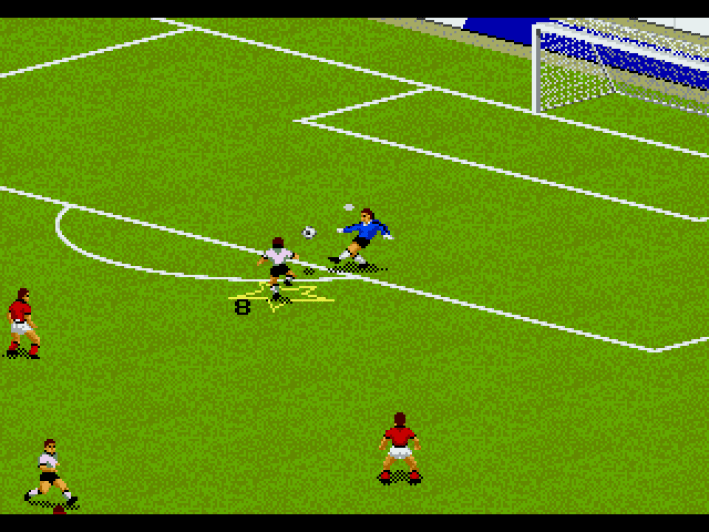In the 21st century EA Sports FC, formerly known as FIFA, is one of the biggest and most lucrative video game series on the planet. But it wasn't always a colossus. Like every other franchise it had to start somewhere, and in FIFA's case, it was a small studio in Vancouver and a license that didn't even cover the player's names.
The following is excerpted from the book A Tale of Two Halves: The History of Football Video Games, by Richard Moss. The book is available for purchase now from Bitmap Books.
One of the most popular video game franchises in the world started here, with fake players (EA didn’t realise a FIFA licence only granted use of the FIFA name) who all looked the same, 48 international teams (but no club sides) and a side-scrolling isometric perspective (technically it’s a dimetric projection, which means that the viewing angle is the same on two axes but different on the third axis of space, giving a perspective that seems both flat and elevated at the same time).
Those humble beginnings are hardly surprising, given the project’s development. It started in EA’s new UK office, dreamed up as a high-tech rival to the genre’s leading lights and prototyped with three different camera angles – one of which was isometric – before upper management shunted development off to EA’s Canadian studio Extended Play. Its small, Vancouver-based dev team lived in constant fear of cancellation, knowing how bluntly apathetic EA’s senior execs felt about soccer, but they managed to get it done and out the door in time for the Christmas 1993 shopping window – whereupon they blew past the UK office’s lofty predictions of 300,000 sales to net more than half a million worldwide and top spot on the UK all-format games charts.
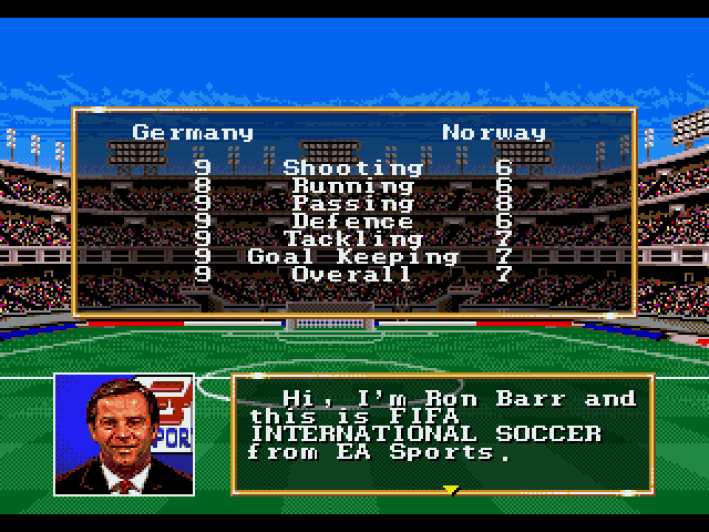
FIFA was, at release, very much an odd duck. Rare was the sports video game without an obvious inspiration within its subgenre, but here we had a title that looked and played unlike any football video game ever. Its closest corollaries in design and graphics were not Sensible Soccer or Kick Off or Striker or anything from the arcades; they were NBA Live, NHL Hockey (both other EA Sports titles) and 4D Sports Tennis (a first-person 3D tennis sim with the same lead programmer).
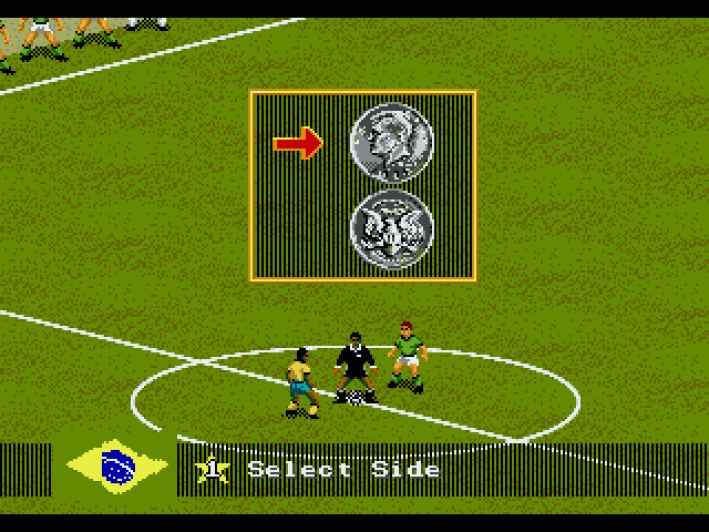
It handled poorly compared to the genre’s top titles, with clunky controls that I’ve seen likened to running through treacle, unbalanced action, shaky goalkeeper AI and a range of ridiculous exploits, but FIFA had a never-before-seen combination of authenticity, style and snazzy animations. It was miles ahead of every football game ever in its presentation; it looked and sounded more or less like football as you saw and heard it on TV, and its gameplay was good enough, even if it wasn’t great.
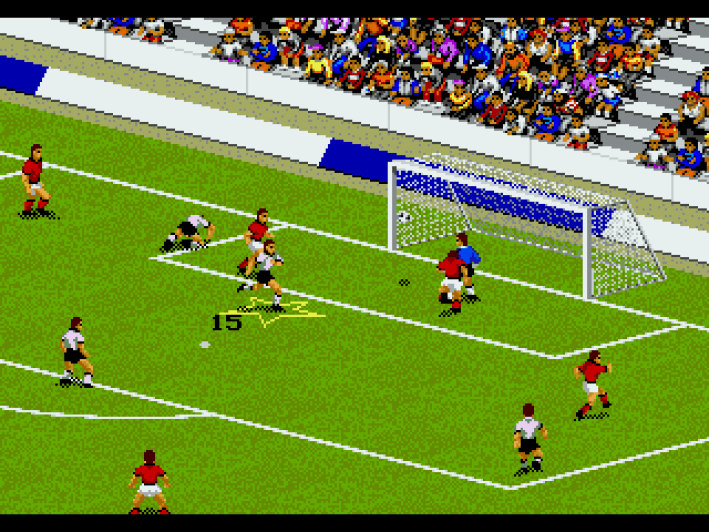
This was just part of its draw, though. FIFA’s mega-success owed much to the fact that it takes mere seconds of play before you trigger your first spectacular moment. Even before you memorise which of the three buttons does what, you’ll invariably hit an accidental screamer from 50 yards out that the keeper tips over the bar, or see one of your players do an acrobatic leap for a flick-on header on a high ball. The downside is that you have less control over your players, as the game does most of the magic for you, but it was sports gaming’s version of popcorn action – light, quick, exciting fun with a near-zero barrier to thrilling, highlights-worthy moments.
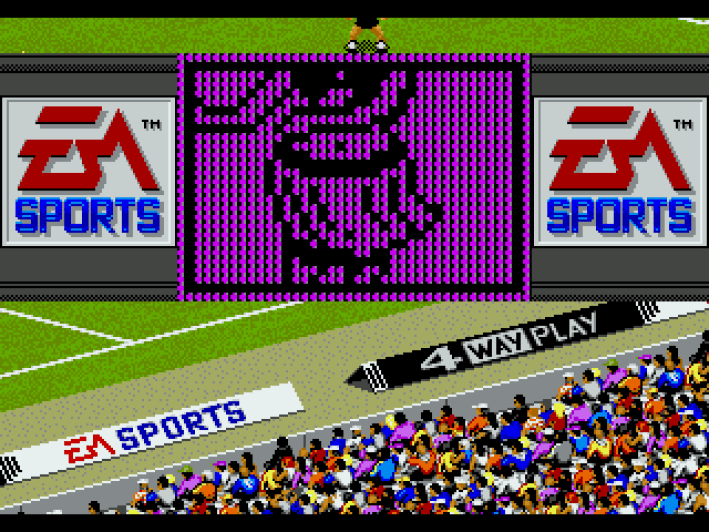
EA had already baked annualised updates into their sports strategy, with the Madden series running yearly since its second entry in 1990, and NHL and NBA Live yearly right from their beginnings. With both commercial and critical success right out the gate – an 85% average across 21 reviews for its Mega Drive original, according to MobyGames – FIFA would be no different. The first game had set a template that would be refined, tweaked and updated every year, for as long as the franchise remains popular, and as such we’d soon see FIFA 95 (1994) arrive with made-up player names now augmented by eight playable national leagues (six from Europe plus the US and Brazil) and a smattering of bug-fixes, gameplay enhancements and minor additions – chief among them AI improvements (mainly to goalkeepers), a slick new menu system, penalty shoot-outs, predefined set-piece options, bicycle-kicks, more responsive (still slow and syrupy) controls and volleys. (And fouls and offsides – incorrectly implemented anyway – are again turned off by default.)
These were worthy improvements, especially for anyone keen to embark on a multi-season club career, but they also flagged the future of sports games: incremental updates, focused on quality-of-life improvements and player/league licensing, interspersed with intermittent engine overhauls to bring the technology up to modern standards.
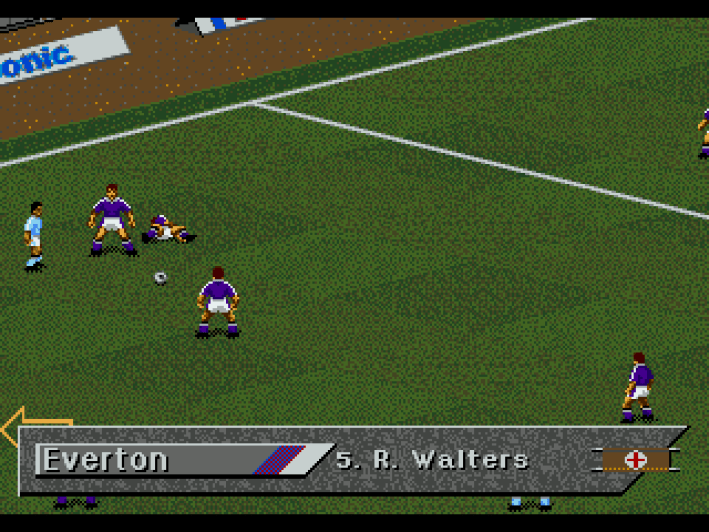
After FIFA 95 (and a 3DO spinoff), the development team shifted focus to next-gen systems and a new 3D graphics engine, but they were in no rush to abandon the large audience of SNES and Mega Drive owners worldwide. New 16-bit editions of FIFA would continue for another three years, each running on the same old 2D isometric engine but granted a variety of new features. FIFA 96 came with new, suave-looking sprites that had been rendered on an expensive SGI workstation, along with long-awaited real player names and various other new features. Then FIFA 97 added an excellent indoor mode and a button for triggering a ‘GOOOALLLL!’ yell during goal celebrations, and FIFA 98 featured a Road to the World Cup mode for playing through the qualification tournaments. These new features evidently caused corner-cutting elsewhere, as the presentation dropped a few notches in quality, but by this point hardly anyone was paying attention to 16-bit anyway.
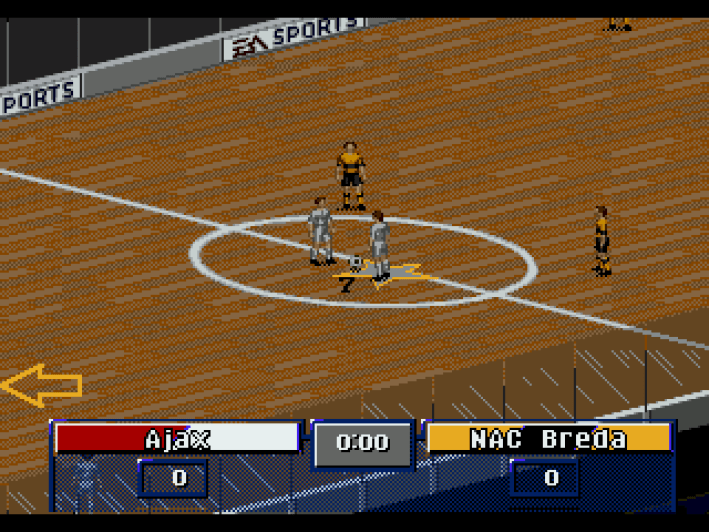
FIFA would conquer the 32-bit space just as effortlessly as it had the 16-bit era, becoming the de facto football game on console and the yardstick against which all others were compared. It had redefined what makes a great football game and reoriented market expectations for what a football game should be, and it did all this in the 16-bit era. FIFA’s multicultural, Canada-based development team had revolutionised the genre, although we were hardly set for a new era of gameplay or graphical stability; further upheaval was just around the corner.
Foul Play: Dodgy Goal Exploits
FIFA has always had a reputation for enabling outrageous goals, banged in from all sorts of angles and distances (even the halfway line!), but its earliest incarnations included a programming oversight that would forever rankle among losers of tense intra-family and friend-vs.-friend tournaments. In real football, players must not (intentionally) interfere with a goalkeeper’s attempts to release the ball – they can’t nick it in the middle of a punt or block a throwing action. But in early FIFA titles you could merrily stand in the way and with a well-timed tap of the button steal possession and/or redirect the ball goalwards, resulting in cries of outrage from any human opponents but a mere shrug from the virtual referee – who ignores the infraction and allows any resulting goal.
